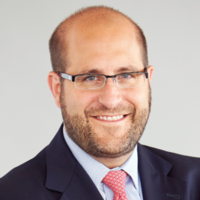International Companies Drive Diabesity Innovation
Key Takeaways
- Long-term investment in Novo Nordisk, a Denmark-based pharmaceutical company whose research and development has pioneered a leading class of diabetes drugs, has provided actionable insights into the blockbuster global market for diabetes and obesity treatments.
- While Novo and Eli Lilly are making substantial investments to produce their leading diabetes and obesity treatments at scale, current production challenges could allow another biopharmaceutical player to gain market share.
- We view diabesity as a dynamic market that will create not only investment opportunities across the health care sector but also second derivative demand in other industries where international companies maintain leadership positions.
Diabetes and Obesity Markets Large and Growing
Drugs based on GLP-1 are developing into a mega blockbuster market for the treatment of diabetes and obesity. Danish pharmaceutical maker Novo Nordisk has been involved for decades in the treatment of diabetes and is pioneering the advanced pharmaceutical treatment of obesity. ClearBridge initially purchased Novo in 2001, well ahead of the first clinical trials for its type 2 diabetes treatment Ozempic. In the last decade, the company’s ability to secure approval for multiple uses of its semaglutide line of therapeutics, which also includes Wegovy and Rybelsus, has created tremendous shareholder value and provided actionable insights into the global market for diabetes and obesity treatments.
Diabetes and obesity (“diabesity”) have rapidly become the largest opportunity in health care, with an estimated total long-term addressable market of $100 billion in the U.S. alone. The international opportunity has only just begun to be addressed and will extend the growth timeline for diabesity. Our conviction in the commercial prospects of GLP-1-based treatments produced by Novo motivated the more recent purchase of Eli Lilly, the maker of GLP-1 drugs Trulicity and Mounjaro, as well as research into other pharmaceutical treatments for diabetes and related conditions.
We have developed a framework to assess the potential size of the diabetes and obesity opportunity in the U.S. Today, there are 30 million diabetics in the U.S. who already have access to GLP-1 prescription reimbursement, of which 25 million are also considered obese. There are also between 60 million and 70 million people who are obese, but not diabetic, and of that population at least 20 million are heavy enough to be a substantial risk for diabetes and other obesity complications. Of these populations, only 4.8 million were receiving monthly prescriptions at the end of the third quarter of 2023. In what we view as a positive development for market expansion, the federal agency administering Medicare is expected to approve coverage of Wegovy to prevent cardiovascular events among obese seniors.
Exhibit 1: Potential U.S. GLP-1 Population

Bubble sizes indicate populations. Source: NHANES data. ClearBridge analysis.
With these treatments already approved by global agencies for type 2 diabetes, obesity and cardiovascular risk reduction, plus promising clinical trial results in addressing several additional complications of obesity, the growth of the GLP-1 market is, in the near term, a function of production capacity. Both Novo and Lilly are making substantial investments to produce their therapeutics at the enormous scale necessary to meet accelerating demand, and to be positioned to handle new markets created by increasing indications for this class of drugs. For example, Novo announced the purchase of Catalent, a U.S.-based contract drug developer and manufacturer, in February to enhance its production capacity. These efforts also include both Novo and Lilly developing viable oral treatments to complement the injectables that constitute the vast majority of current GLP-1 drug sales.
Current production challenges could allow another player with a reasonably competitive drug and manufacturing capacity to gain market share. Along those lines, we have identified Danish biotechnology firm Zealand Pharma as another promising investment opportunity in diabetes and obesity. In partnership with privately held German health care group Boehringer Ingelheim, one of Zealand Pharma’s drugs is in Phase 3 trials for diabetes, obesity and obesity-related liver complications. Further, Zealand has a second drug candidate that could offer a promising new mechanism for weight loss and diabetes control.
Opportunities Beyond Pharmaceuticals
We are also participating in the growth of the diabetes and obesity market through medical devices and life science tools suppliers. U.S.-based DexCom produces continuous glucose monitoring devices (CGMs) that our research has suggested can lead to even better results for patients when used in conjunction with GLP-1 treatments. The company recently gained approval for a sensor intended for the 70% of the diabetic population that does not use insulin. DexCom has partnered for years with U.S. managed care provider UnitedHealth to help prevent the onset of diabetes in at-risk populations. Data from that partnership has shown that patients provided with information from CGMs are more likely to improve their eating and fitness habits.
Several of the leading suppliers of injectables are also based outside the U.S. Germany’s Schott Pharma and Gerresheimer, as well as Italy’s Stevanato Group, are leading suppliers of syringes, cartridges and autoinjectors used to dispense GLP-1 injections. As injectable GLP-1 adoption continues to progress, these companies will be key beneficiaries.
We view “diabesity” as a dynamic market that will create not only further investment opportunities across the health care sector but also second derivative demand in other industries. Weight loss and other physical improvements resulting from GLP-1 treatment could encourage consumers to spend more on their personal health and appearance. While we are still early in this potential health transformation, we believe lifestyle-motivated spending will increase demand for healthier food and beverage products as well as beauty, apparel and luxury goods, areas where international companies maintain leadership positions.
Researching and investing in international companies can offer inroads into research and development, innovation and superior products and services that are easily overlooked with a U.S.-centric focus. As global investors, studying the business models and management teams of such companies can also offer valuable perspectives that can enhance our understanding of the markets and competitive dynamics faced by U.S. companies.
Related Perspectives

China Emerging as Global Biotechnology Player
Evolving from its fast follower approach, an expanding number of Chinese biotech companies are licensing new compounds to multinational pharmaceutical firms.
Read full article

